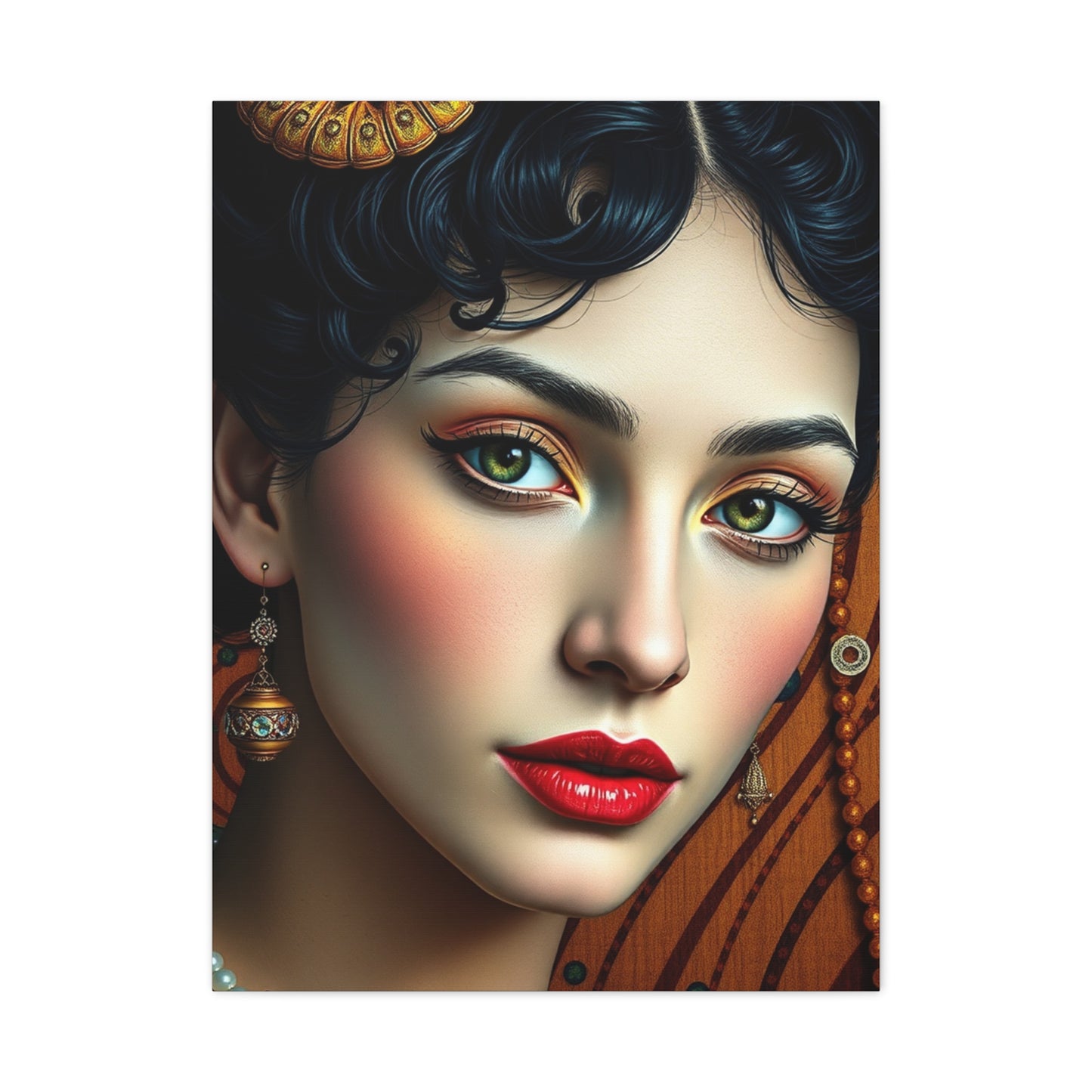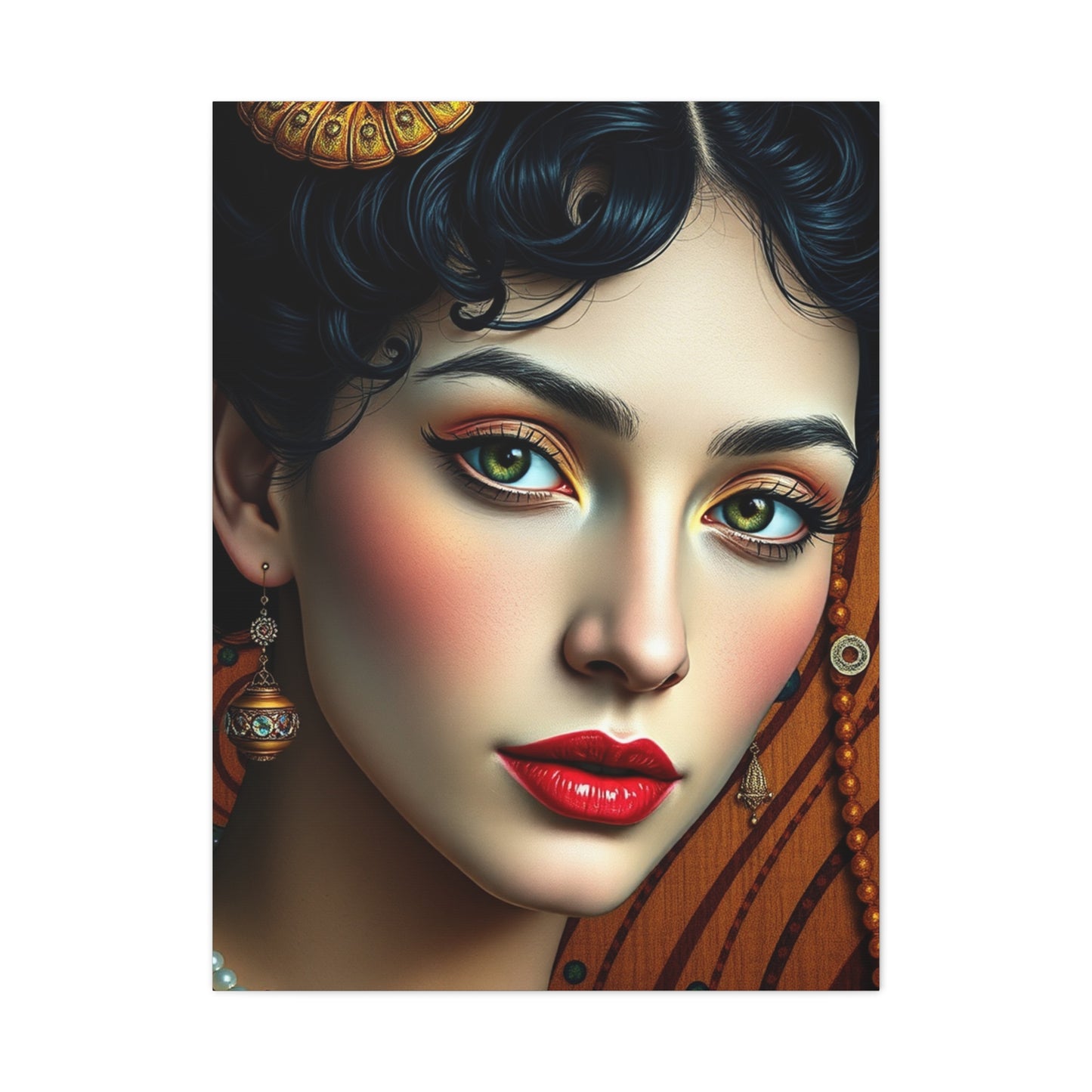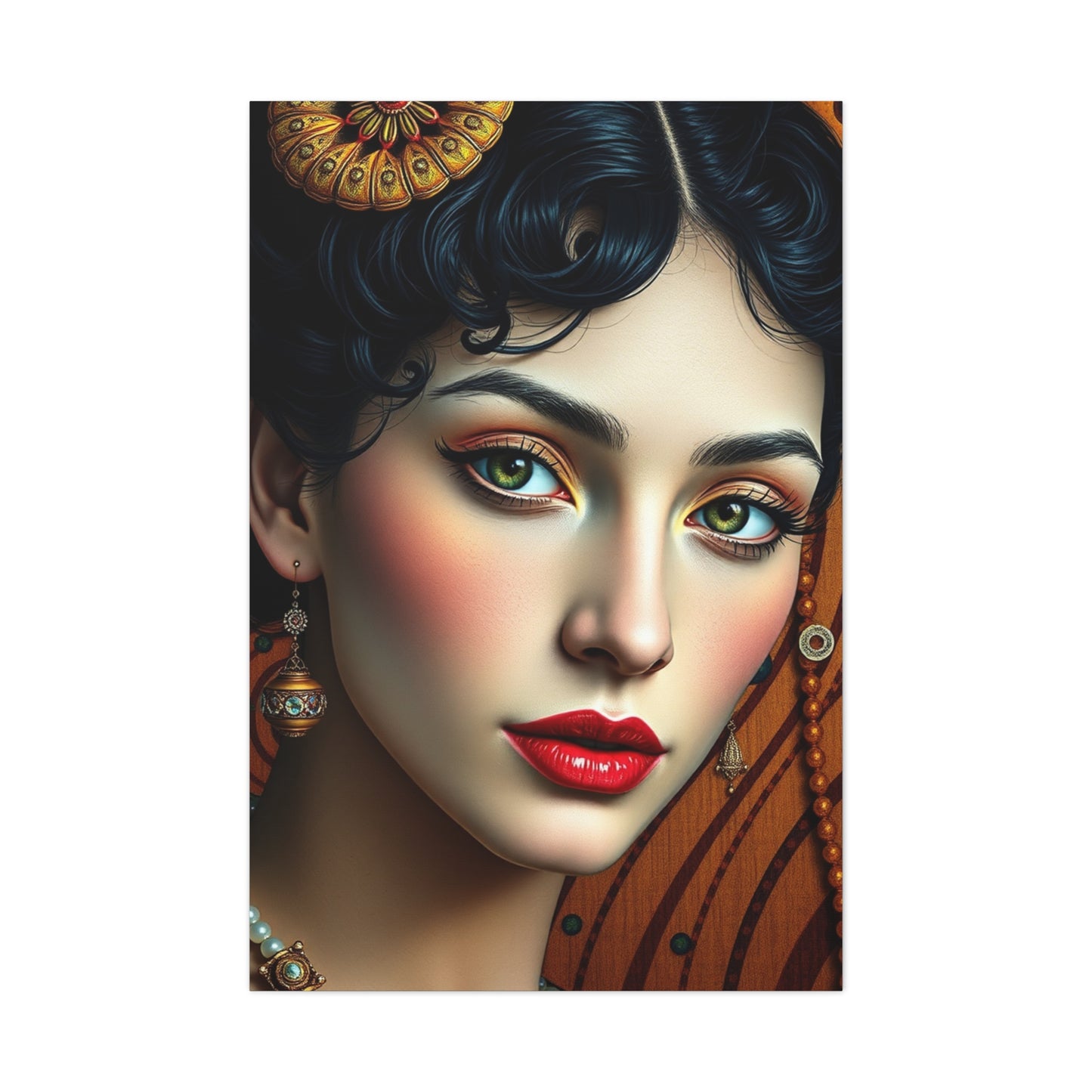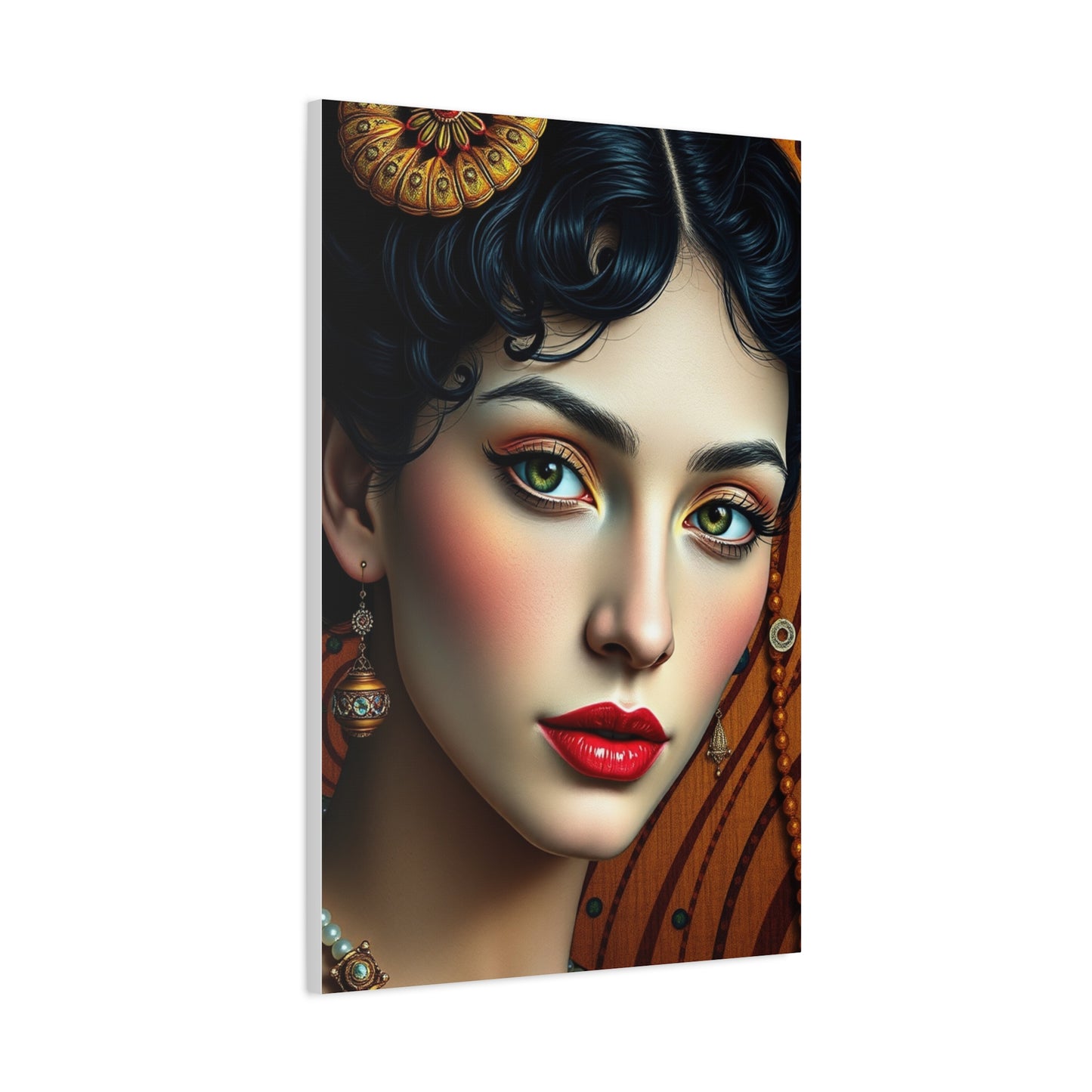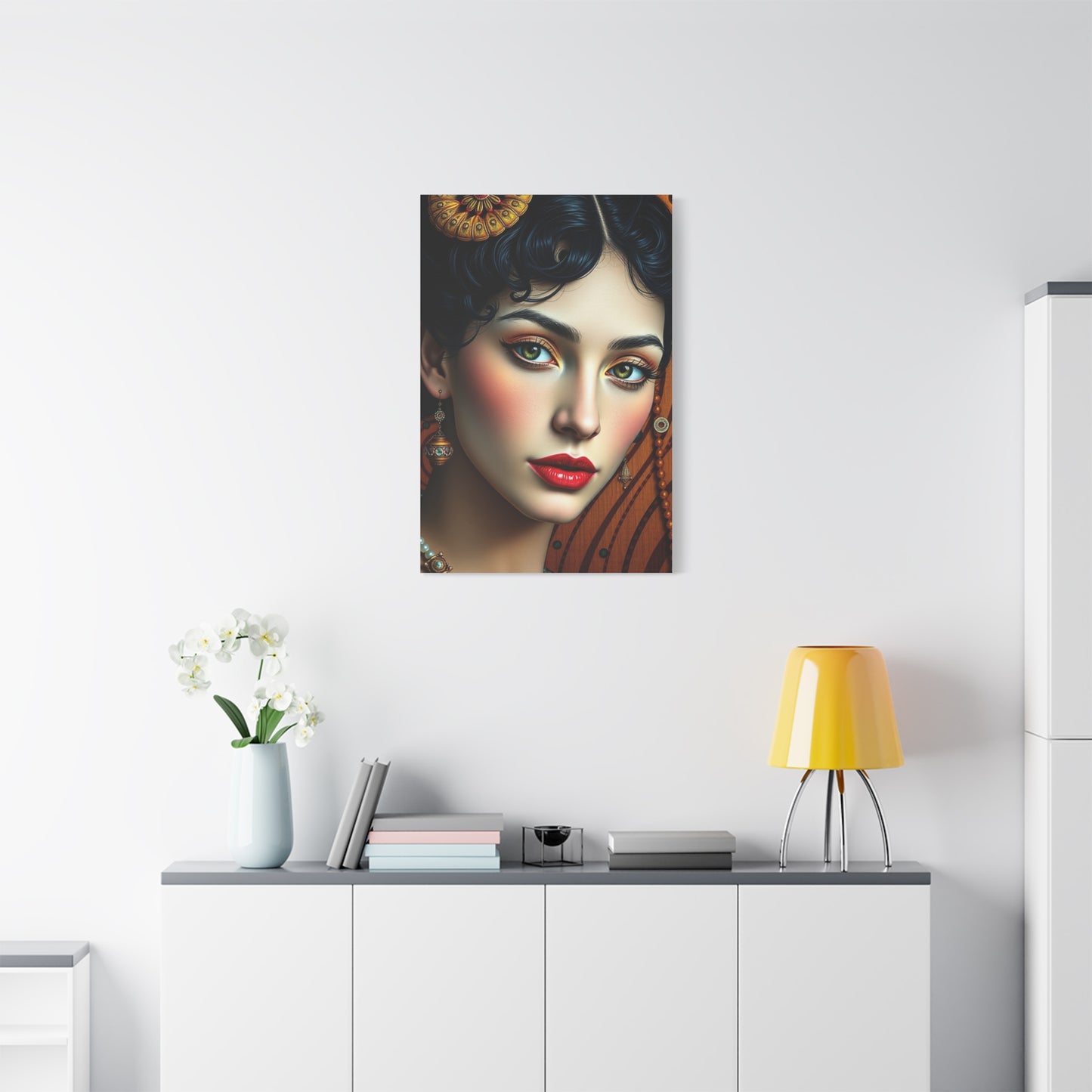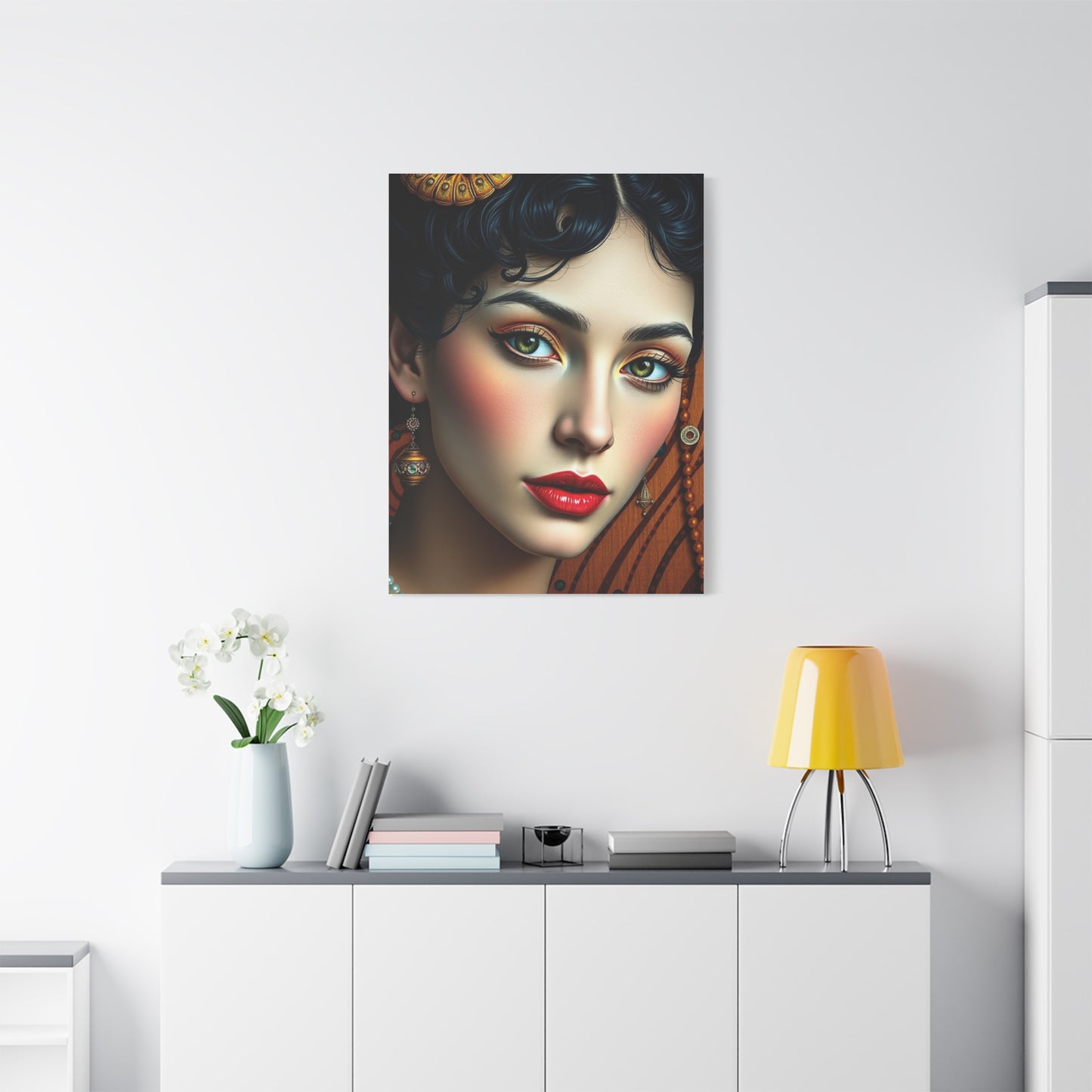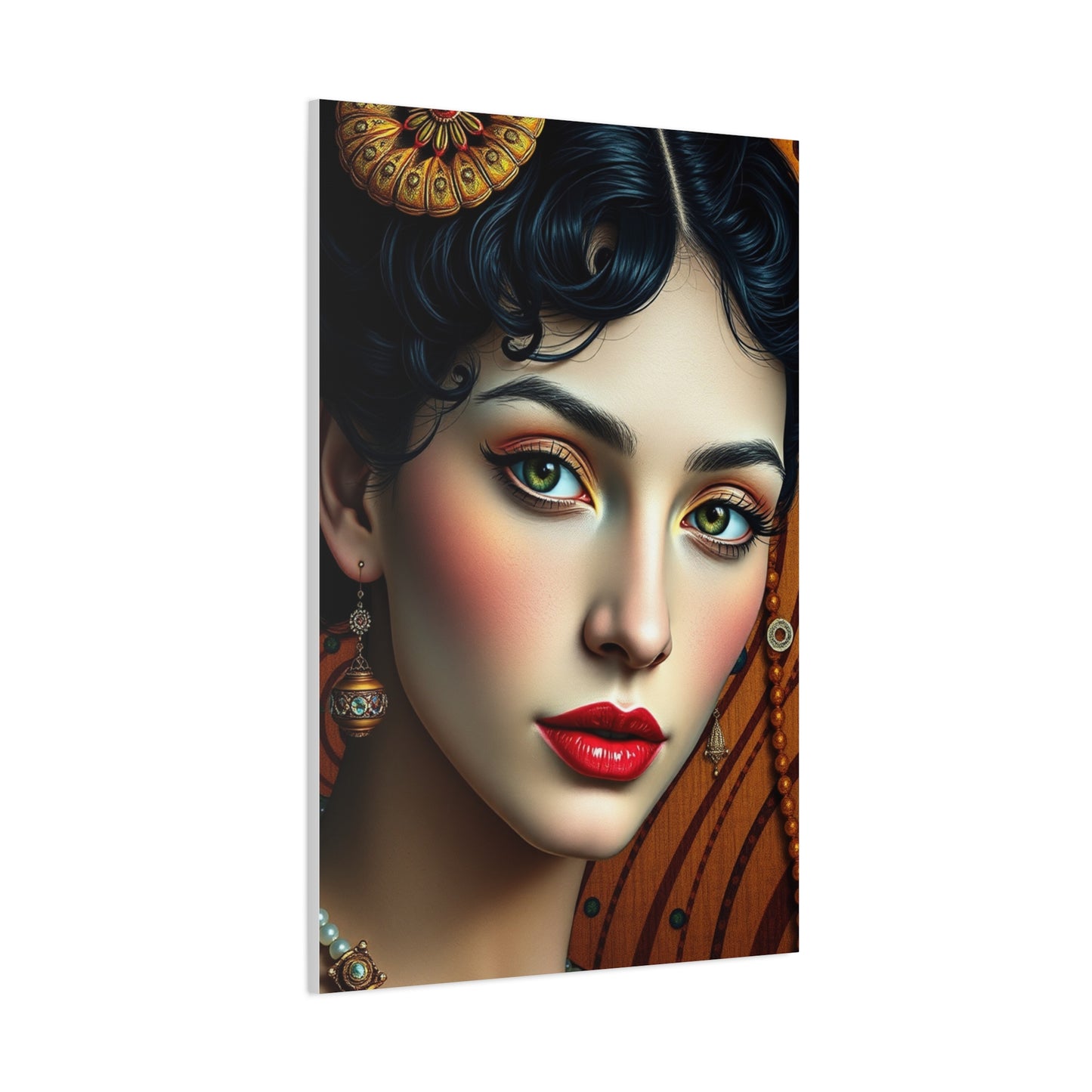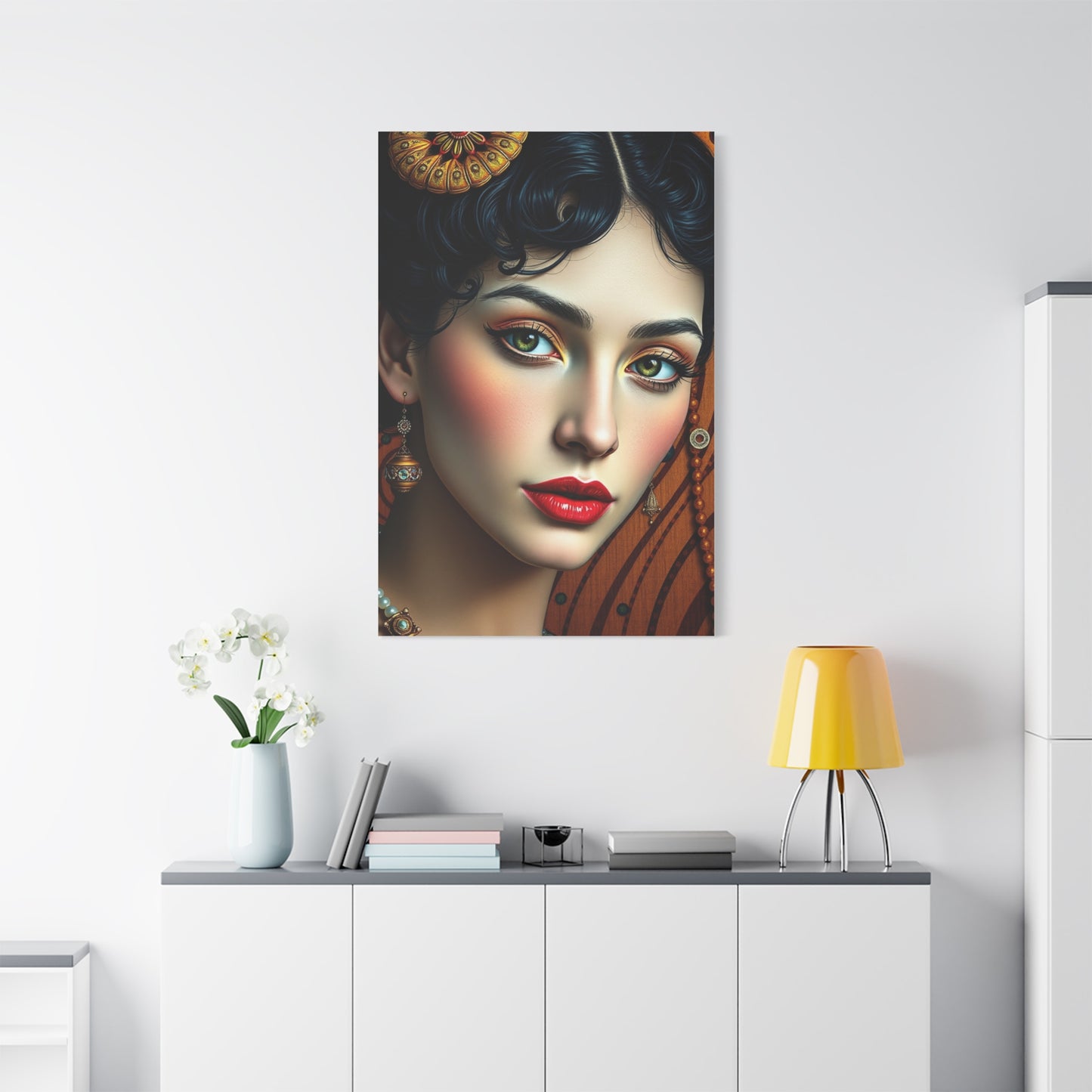Gilded Serenity Canvas: The Complete Guide to Creating Peaceful Gold Art
The intersection of tranquility and opulence creates something truly extraordinary in the world of visual expression. When metallic elegance meets peaceful aesthetics, the result transforms ordinary spaces into sanctuaries of refined beauty. This comprehensive exploration delves into every aspect of creating and appreciating artwork that combines lustrous metallic elements with calming design principles, offering insights for artists, collectors, and anyone seeking to infuse their environment with sophisticated tranquility.
The marriage of precious metal tones with serene compositions represents more than just aesthetic appeal. It embodies a philosophy that luxury and peace are not opposing forces but complementary elements that enhance each other. Throughout history, civilizations have recognized the unique power of metallic embellishments to elevate spiritual spaces, create meditative focal points, and inspire contemplation. Today, this tradition continues in contemporary settings, where modern interpretations blend timeless elegance with minimalist sensibilities.
Understanding the fundamental principles behind this art form requires exploring its historical roots, psychological impact, technical execution, and practical application. From ancient Byzantine icons adorned with precious metals to contemporary minimalist installations, the use of lustrous materials in peaceful compositions has evolved while maintaining its essential power to captivate and soothe. This journey through technique, theory, and practice will provide you with comprehensive knowledge to appreciate, create, and incorporate these stunning pieces into your life.
The Transformative Power of Metallic Elements in Visual Expression
The relationship between precious metal aesthetics and human emotion runs deep through our collective consciousness. When we encounter artwork featuring lustrous metallic tones, something profound occurs in our perception. The eye is naturally drawn to these reflective surfaces, which possess an inherent quality that elevates the ordinary to the extraordinary. This phenomenon is not merely superficial but connects to fundamental aspects of how we process visual information and emotional content.
Metallic surfaces interact with light in unique ways that solid colors cannot replicate. They capture, reflect, and refract illumination, creating dynamic visual experiences that change throughout the day. Morning light might cast soft, warm glows across a canvas, while afternoon sun creates brilliant highlights and deep shadows. Evening illumination transforms the same piece again, offering intimate, subdued elegance. This ever-changing nature mirrors the natural world, where nothing remains static, creating an organic connection between artwork and environment.
The psychological impact of encountering metallic elements in peaceful compositions stems from multiple sources. Historically, these materials have been associated with the divine, the eternal, and the precious. Ancient cultures reserved such embellishments for sacred objects, religious texts, and royal treasures. This cultural memory persists in our subconscious, lending weight and significance to artwork incorporating these elements. When combined with tranquil compositions, the result is a powerful juxtaposition that speaks to both our desire for spiritual elevation and our need for mental repose.
Research in environmental psychology has demonstrated that our surroundings significantly influence our mental states. Spaces adorned with artwork that combines reflective metallic surfaces with calm compositions can reduce stress markers, lower blood pressure, and promote feelings of well-being. The mechanism involves both the calming color palettes typically employed and the mesmerizing quality of light dancing across metallic surfaces. This dual action creates environments that feel simultaneously grounded and transcendent, offering refuge from the chaos of modern life.
The cultural significance of metallic embellishments spans continents and millennia. In Eastern traditions, particularly within Buddhist and Hindu art, these elements represent enlightenment, purity, and the divine nature of existence. Western religious art employed similar techniques to convey heavenly realms and sacred figures. Islamic art developed extraordinarily sophisticated geometric patterns enhanced with metallic details, creating spaces that inspire contemplation and wonder. Understanding these traditions enriches our appreciation of contemporary works that draw on this deep well of cultural meaning.
Creating artwork that successfully combines metallic elegance with peaceful aesthetics requires understanding balance. Too much metallic presence can feel overwhelming or garish, while too little might fail to achieve the desired impact. The most successful pieces find the sweet spot where lustrous elements enhance rather than dominate, where they contribute to the overall sense of tranquility rather than disturbing it. This balance is both technical and intuitive, developed through practice and refined through careful observation.
The democratization of materials and techniques has made these artistic approaches accessible to a broader range of creators. What once required expensive precious metals and specialized training can now be achieved through various materials and methods. This accessibility has sparked renewed interest in metallic embellishments across artistic disciplines, from fine art to home decor, from meditation spaces to corporate environments. The essential principles remain constant even as the specific materials and techniques evolve.
Understanding the interplay between metallic surfaces and peaceful compositions also involves recognizing the role of negative space. In many successful works, areas of lustrous detail are balanced by expanses of calm, minimal background. This relationship creates visual breathing room, allowing the eye to rest while also providing moments of focused interest. The rhythm between embellished and plain areas mirrors the natural rhythm of breathing, potentially contributing to the calming effect these pieces produce.
The sensory experience of encountering these works extends beyond visual perception. The knowledge that real metallic materials are present adds a tactile dimension, even when viewers do not physically touch the piece. There is a tangible quality to these surfaces that photographs cannot fully capture, making the experience of seeing such artwork in person distinctly different from viewing reproductions. This physical presence contributes to the sense of value and significance that enhances the overall impact.
Contemporary artists working in this tradition often bring fresh perspectives that honor historical techniques while pushing boundaries. Some incorporate unconventional materials, creating metallic effects through innovative means. Others juxtapose traditional gilding with digital elements or mixed media approaches. These experimental directions demonstrate the vitality and continuing relevance of combining lustrous embellishments with peaceful aesthetics. The conversation between tradition and innovation enriches the field, offering endless possibilities for exploration and expression.
Step-by-Step Process for Creating Lustrous Peaceful Artwork
Embarking on the journey of creating your own metallic embellished artwork begins with proper preparation and understanding of fundamental techniques. The process requires patience, attention to detail, and respect for materials, but the results can be extraordinarily rewarding. Whether you are an experienced artist exploring new techniques or a beginner drawn to this aesthetic, following a structured approach will help you achieve professional results.
The foundation of any successful canvas project starts with selecting appropriate materials. The base surface must be properly prepared to accept both paint and metallic applications. Traditional stretched canvas works beautifully, but wooden panels offer even smoother surfaces ideal for detailed metallic work. The surface should be primed with high-quality gesso, applied in multiple thin layers and sanded between coats to create a perfectly smooth foundation. This preparation might seem tedious, but it dramatically impacts the final result, especially when working with reflective materials that highlight every imperfection.
Designing your composition requires thoughtful consideration of where metallic elements will appear and how they will interact with other elements. Sketching multiple variations helps refine ideas before committing to the final piece. Consider the balance between embellished and plain areas, the flow of the eye across the composition, and how light will interact with different elements. Many successful pieces use metallic details as accents rather than covering entire surfaces, creating focal points that draw attention without overwhelming the viewer.
The layering process typically begins with establishing the background. Acrylic paints work excellently for this phase, offering quick drying times and excellent coverage. Build up colors gradually, working from dark to light in most cases. For peaceful compositions, consider soft neutrals, cool blues, gentle greens, or warm earth tones as foundations. These colors provide calm backgrounds that allow metallic elements to shine without competing. Allow each layer to dry completely before proceeding, ensuring clean transitions and preventing muddy colors.
Applying metallic elements requires specific techniques depending on your chosen materials. Traditional leaf application involves first applying a special adhesive called size to areas where you want metallic coverage. This adhesive must reach the correct tackiness before applying the leaf, neither too wet nor too dry. Testing on scrap material helps develop a feel for the right moment. When applying leaf sheets, use a soft brush to gently press them onto the adhesive, then brush away excess. The delicate nature of leaf means working slowly and methodically, accepting that imperfections can add character to the finished piece.
For those preferring alternative materials, metallic paints and pastes offer different effects with sometimes easier application. High-quality metallic acrylics provide smooth, even coverage and can be applied with brushes or palette knives. Layering different metallic tones creates depth and interest, preventing the flat appearance that can result from single-layer applications. Metallic wax pastes can be applied with fingers or soft cloths, then buffed to a beautiful sheen. These materials allow more control than leaf for detailed work or blended effects.
Creating texture adds another dimension to metallic artwork. Modeling paste or texture mediums can be applied to create raised surfaces that catch light in interesting ways. Apply these materials with palette knives, creating patterns that complement your overall design. Once dry, these textured areas can be painted or receive metallic applications that emphasize the dimensional quality. The interplay between smooth and textured surfaces, matte and reflective areas, creates visual complexity that rewards extended viewing.
Protecting your finished work ensures longevity and maintains its beauty. Once all layers are completely dry, apply an appropriate sealer. For pieces with delicate leaf, this step is particularly important. Soft-bristle brushes apply sealers gently without disturbing metallic surfaces. Multiple thin coats provide better protection than single heavy applications. Some sealers slightly alter the appearance of metallic elements, so testing on samples helps you understand the final effect. Choose sealers specifically formulated for use over metallic media to avoid discoloration or tarnishing.
The drying and curing process requires patience but cannot be rushed. Even when surfaces feel dry to the touch, chemical curing continues. Allow at least several days before handling finished pieces extensively, and wait several weeks before framing or installing in permanent locations. This waiting period ensures all materials have fully cured, preventing issues like cracking, peeling, or discoloration that can occur when pieces are disturbed too early.
Developing your skills in this medium happens through practice and experimentation. Keep samples of different techniques, noting which combinations of materials, applications, and finishes produce desired effects. Build a reference library of successful approaches and learn from less successful attempts. Many accomplished artists maintain journals documenting their process, materials used, and observations about results. This documentation becomes invaluable for replicating successful techniques and troubleshooting problems.
Working in series allows deep exploration of particular concepts or techniques. Rather than creating single unrelated pieces, consider developing bodies of work that investigate variations on themes. This approach accelerates learning while creating cohesive collections. A series might explore different color combinations with similar metallic applications, various compositional arrangements using consistent materials, or progressive abstraction of a single motif. Series work often leads to breakthrough discoveries as you push beyond initial ideas into unexpected territory.
Collaboration and community connection enrich the creative journey. Seek out other artists working with similar materials and techniques, sharing knowledge and inspiration. Workshops and classes provide structured learning opportunities while connecting you with like-minded individuals. Online communities offer resources, critique, and encouragement. The generosity of established artists in sharing their knowledge helps newcomers avoid common pitfalls and accelerates skill development. In turn, as you gain experience, contributing to these communities by sharing your own discoveries perpetuates this valuable tradition.
Incorporating Lustrous Artwork into Peaceful Environments
Transforming living spaces into tranquil sanctuaries involves thoughtful selection and placement of artwork. When incorporating pieces that combine metallic elegance with peaceful aesthetics, consider how these works will function within the larger environment. The goal is creating harmony between artwork and surroundings, where each element enhances the others to produce an overall sense of sophisticated calm.
The relationship between artwork and natural light fundamentally shapes the viewer experience. Positioning pieces where they receive indirect natural illumination allows their metallic surfaces to glow softly throughout the day. Direct harsh sunlight can create glare that obscures detail, while insufficient light prevents the dynamic quality of reflective surfaces from being appreciated. Observe how light moves through your space at different times, identifying locations where gentle illumination will animate the artwork without overwhelming it.
Scale and proportion matter tremendously when selecting pieces for specific spaces. In intimate areas like bedrooms or meditation rooms, smaller works often feel more appropriate, creating focal points without dominating. Larger spaces can accommodate more substantial pieces or arrangements of multiple works. Consider the viewing distance as well. Artwork intended for close contemplation can include finer details, while pieces viewed primarily from across rooms benefit from bolder compositions with larger areas of metallic interest.
Color relationships between artwork and surrounding decor create either harmony or discord. Metallic elements typically complement a wide range of color schemes, but surrounding colors affect how the metallics are perceived. Cool-toned rooms enhance silver and platinum metallic appearances, while warm spaces emphasize golden and copper tones. Neutral environments provide the most flexibility, allowing metallic artwork to establish the color temperature rather than responding to existing palettes. Understanding these relationships helps select or create pieces that integrate seamlessly into your spaces.
Creating gallery walls or arrangements of multiple pieces allows for dynamic displays that evolve over time. When grouping works featuring metallic elements, consider how they relate to each other. Too much metallic content across multiple pieces can feel excessive, while careful distribution creates rhythm and balance. Mix pieces with different proportions of embellishment, creating visual variety while maintaining cohesive aesthetic. Allow adequate spacing between works, giving each piece breathing room while creating relationships between them.
Furniture placement and room layout should consider sightlines to featured artwork. Position seating to allow comfortable viewing from relaxed positions. In meditation or yoga spaces, artwork might be placed at eye level when seated on the floor. Living rooms benefit from artwork positioned above sofas or accent chairs, creating focal points that anchor conversation areas. Entryways make powerful statements with striking pieces that set the tone for entire homes. Consider the journey through spaces, placing artwork at natural pausing points where it will be encountered and appreciated.
Lighting design significantly impacts how metallic artwork appears. While natural light provides beautiful illumination, artificial lighting extends appreciation into evening hours. Picture lights designed specifically for artwork provide focused illumination without overwhelming spaces. Track lighting offers flexibility in directing light precisely where desired. Warm LED bulbs typically complement metallic elements better than cool fluorescent options. Dimmer switches allow adjustment for different moods and times of day, maximizing the versatility of your lighting design.
Maintaining appropriate humidity and temperature protects both artwork and living spaces. Extreme fluctuations can damage canvas, cause paint to crack, or affect metallic elements. Most homes maintain conditions suitable for artwork, but special consideration may be needed in bathrooms, basements, or other areas prone to moisture. Avoid placing valuable pieces near heating vents, air conditioning units, or other sources of direct temperature changes. These precautions ensure your artwork remains beautiful for years while also indicating good overall environmental control.
Rotating artwork periodically refreshes spaces and allows different pieces to shine. This practice is particularly valuable for collectors with more works than display space. Seasonal rotations can emphasize different moods or color palettes appropriate to times of year. Rotating artwork also distributes light exposure, preventing some pieces from fading while others remain in storage. This approach keeps environments dynamic and interesting while protecting your collection.
Creating dedicated spaces for contemplation and meditation becomes easier when anchored by appropriate artwork. A corner with comfortable seating, soft lighting, and a piece combining metallic beauty with peaceful composition becomes a refuge for daily practice. The artwork serves as a focal point for meditation, its reflective qualities adding depth to the experience. Over time, the association between the space, the artwork, and the practice of mindfulness strengthens, making it easier to enter meditative states when encountering these visual cues.
Professional installation ensures artwork is displayed safely and beautifully. Proper hanging techniques prevent damage to both walls and artwork. Use appropriate hardware rated for the weight of your pieces, and ensure secure attachment to wall studs when hanging heavier works. Level hanging creates professional appearances, while careful measurement ensures proper positioning. For valuable or large pieces, professional installation services provide expertise and insurance coverage. The investment in proper installation protects both your artwork and your walls while ensuring optimal presentation.
Living with metallic artwork creates ongoing relationships that deepen over time. Unlike static reproductions, original pieces with actual metallic elements reveal new aspects as light changes, as you encounter them in different moods, and as your understanding of their creation grows. This living quality makes them endlessly interesting companions in your daily life. Pay attention to how these pieces affect your state of mind, your stress levels, and your overall sense of well-being. Many people find that consciously appreciating artwork becomes a form of informal mindfulness practice, bringing moments of beauty and calm into busy days.
Color Harmonies and Metallic Combinations
Understanding color theory becomes essential when creating or selecting artwork that combines metallic elements with peaceful compositions. The interaction between colors and metallics creates visual experiences that can be harmonious and soothing or jarring and unsettling. Developing sensitivity to these relationships empowers you to make choices that support your aesthetic and emotional goals.
Neutral palettes provide the most versatile foundations for metallic embellishments. Soft grays ranging from warm to cool create sophisticated backgrounds that allow metallic elements to shine without competition. Creamy whites and gentle beiges offer similar versatility while bringing slightly warmer sensibilities. These neutral approaches work particularly well in minimalist compositions where the interplay between simplicity and elegance creates the primary visual interest. The restraint of neutral palettes allows metallic details to become focal points without overwhelming the overall sense of tranquility.
Cool color families including blues, greens, and purples create naturally calming effects that pair beautifully with certain metallic tones. Soft sky blues combined with silver metallic elements evoke peaceful skies and water, tapping into universal associations with tranquil natural environments. Sage greens with copper or bronze metallics bring warmth while maintaining organic connections. Lavender and pale purple with platinum or silver create dreamy, ethereal qualities perfect for meditation spaces. These cool palettes generally recede visually, creating sense of spaciousness that enhances feelings of calm.
Warm color approaches using earth tones, soft peaches, and muted terracotta create cozy, grounded feelings that contrast interestingly with the elegance of metallic elements. These combinations prevent metallic embellishments from feeling cold or austere, instead creating welcoming warmth. Warm gold tones combined with cream, tan, or soft brown create monochromatic harmony with subtle variation. Rose gold with blush pinks produces romantic, gentle effects. These warmer palettes work particularly well in spaces meant for comfort and relaxation, like bedrooms or reading nooks.
Monochromatic approaches using variations of single hues create sophisticated unity. A composition might employ multiple tones of blue, from deep navy to pale sky, with silver metallic accents tying the values together. Similarly, warm compositions might use cream through deep caramel with gold metallic threads throughout. Monochromatic palettes create calm through their coherence, while metallic elements add the visual interest that prevents monotony. This approach is particularly effective for creating serene environments that still feel dynamic and engaging.
Complementary color relationships place opposite hues on the color wheel together, creating visual vibration that can be moderated through careful value and saturation choices. Rather than using fully saturated complements, peaceful compositions employ softened versions. Muted blue-green with quiet coral, desaturated purple with gentle yellow-green, or soft blue with barely-there orange create interest without tension. Metallic elements can bridge these complementary relationships, providing neutral ground that harmonizes the palette. This sophisticated use of color theory creates complexity while maintaining tranquility.
Analogous color schemes use adjacent hues on the color wheel, creating naturally harmonious combinations. Blue flowing into blue-green flowing into green, all in muted tones, creates peaceful progression. Adding metallic elements in compatible tones enhances this flow. Silver or platinum metallics work beautifully with cool analogous schemes, while gold and copper complement warm progressions. These palettes feel cohesive and restful, with enough variety to maintain interest without creating visual tension.
Temperature balance within compositions affects emotional response. Even warm palettes benefit from small amounts of cool color to prevent overwhelming coziness from becoming oppressive. Similarly, cool compositions can feel unwelcoming without small warm accents providing balance. Metallic elements can serve this balancing function. Warm gold adds life to cool blue compositions, while silver prevents warm palettes from becoming too heavy. This temperature balancing creates more livable artwork that remains appealing across different lighting conditions and viewer moods.
Saturation levels dramatically impact the peaceful quality of color palettes. Highly saturated colors demand attention and create energy that may not support tranquility. Muted, desaturated colors feel gentler and more restful. When working with peaceful compositions, consider reducing color saturation significantly from pure hues. Mix colors with their complements or with neutral grays to achieve softer versions. This restraint allows metallic elements to provide visual excitement without competing with aggressive colors.
Value contrast between colors affects readability and visual energy. High contrast creates drama and dynamism, while low contrast produces gentle, subtle effects. For peaceful artwork, moderate to low contrast typically feels most appropriate. Adjacent values blend softly, creating gentle transitions that ease the eye rather than jolting it. Metallic elements naturally create contrast through their reflective properties, so background color relationships can be subtle. This approach prevents visual chaos while maintaining enough interest to engage viewers.
Cultural color associations influence emotional responses to palettes. Understanding these connections helps create artwork that communicates desired feelings. Blue universally reads as peaceful and contemplative. Green connects to nature and renewal. Purple suggests spirituality and introspection. While personal preferences always matter, awareness of common associations helps predict how audiences might respond to color choices. Combining colors with strong peaceful associations with elegant metallic elements reinforces the overall message of sophisticated tranquility.
Personal color preferences should guide your selections despite general principles. You will live with artwork, so it must resonate with your sensibilities. Experiment with combinations that appeal to you, trusting your responses even when they diverge from conventional wisdom. Keep a color journal documenting palettes you encounter in nature, other artwork, or photography that evoke desired feelings. These references become invaluable when making creative decisions, providing starting points grounded in authentic responses rather than abstract theory.
Testing color combinations before committing to final pieces prevents disappointment. Create small studies exploring different palettes with your chosen metallic elements. Live with these studies for several days, observing them in different lighting and moods. This testing reveals which combinations maintain their appeal beyond initial attraction. Some combinations that seem exciting initially become tiresome quickly, while others that appear subtle at first reveal growing depths over time. This patient evaluation process leads to more satisfying final works.
Minimalist Approaches to Metallic Embellishment
The philosophy of minimalism emphasizes careful curation, intentional choice, and quality over quantity. When applied to artwork featuring metallic elements, minimalist principles create pieces of extraordinary elegance and power. The restraint inherent in minimalism prevents metallic embellishments from becoming garish or overwhelming, instead allowing them to function as carefully placed jewels in compositions of serene simplicity.
Understanding minimalism requires recognizing that it is not about deprivation but about essentialism. Every element present earns its place through clear purpose and contribution to the whole. In metallic artwork, this might mean a single line of lustrous material bisecting an otherwise blank canvas, or small geometric shapes positioned according to careful compositional principles. The space around these elements becomes as important as the elements themselves, creating breathing room that allows full appreciation of what is present.
Geometric abstraction pairs beautifully with minimalist metallic applications. Simple shapes including circles, rectangles, triangles, and lines become vehicles for exploring relationships between form, space, and material. A perfect circle of metallic material on a neutral ground creates a focal point that invites contemplation. Multiple rectangles in different metallic tones arranged according to mathematical relationships create visual harmony. These geometric approaches connect to long traditions in abstract art while bringing fresh interpretations through material choice and execution.
Linear compositions using metallic elements create dynamic effects through economy of means. A single horizontal line of lustrous material can suggest horizons, divisions between earth and sky, or abstract concepts of separation and connection. Vertical lines create different energies, suggesting growth, aspiration, or structural support. Diagonal lines introduce movement and tension that can be either energizing or unsettling depending on execution. Understanding the different energies of linear orientations helps create compositions that support desired emotional effects.
Negative space functions as an active element in minimalist compositions rather than empty background. The relationship between metallic elements and surrounding emptiness creates the primary visual interest. Learning to see negative space as shape rather than void develops compositional sophistication. When metallic elements are small relative to canvas size, the proportions and positions of these elements within the larger field become crucial. Golden ratio and other mathematical relationships can guide placement, or intuitive approaches can discover positions that simply feel right.
Texture contrast between smooth and rough, matte and reflective, provides visual interest in minimalist works. A large expanse of matte neutral background suddenly interrupted by a small area of brilliant metallic creates powerful contrast. Alternatively, textured backgrounds can be unified by smooth metallic elements that calm the surface variation. Understanding these textural relationships allows creation of pieces with substantial visual interest despite minimal color or formal variation.
Monochromatic minimalism takes restraint to its logical extreme, working within single color families or even single hues. These compositions might feature various tones of gray with silver metallic accents, or shades of cream with gold embellishments. The limitation forces attention to subtle variations in value, texture, and finish that might be overlooked in more complex color schemes. This austere approach creates deeply peaceful effects while demonstrating sophisticated artistic control.
Repetition and variation create rhythm in minimalist compositions. A series of identically sized metallic circles might progress across a canvas, creating pattern and movement. Alternatively, variations in size, spacing, or metallic tone within a repeated form create dynamic visual interest. The relationship between what remains consistent and what changes becomes the compositional story. This approach connects to musical concepts of theme and variation, creating visual experiences that unfold over time as viewers discover the patterns and deviations.
Scale relationships between metallic elements and overall canvas size dramatically affect impact. Very small metallic details on large canvases create intimate moments that reward close inspection, functioning like whispered secrets. Large expanses of metallic surface on appropriately sized canvases make bold statements through material presence. Understanding how scale affects perception helps artists make intentional choices that support their conceptual goals.
Edge quality where metallic and non-metallic areas meet affects overall character. Hard, crisp edges create clean, precise effects appropriate for geometric compositions. Soft, feathered transitions produce gentler effects more suitable for organic or atmospheric approaches. Some artists employ both edge qualities within single pieces, using variation to create interest and guide viewer attention. Mastery of edge control contributes significantly to professional finish in minimalist metallic works.
Minimalist practice extends beyond individual pieces to how work is displayed and presented. Simple frames or no frames at all, ample space between pieces, and clean gallery-style hanging respect and enhance minimalist aesthetics. Cluttered or ornate presentation contradicts the essential simplicity these works embody. Consider the total visual experience including the artwork itself and its context, ensuring every element supports the minimalist philosophy.
Conceptual depth prevents minimalist work from feeling empty or simplistic. While visual simplicity is the goal, conceptual richness provides substance that engages viewers beyond immediate aesthetic appeal. Each piece might explore ideas about perception, materiality, time, or consciousness through minimal means. Artist statements or titles can provide entry points for understanding deeper intentions, though the work should function independently for viewers who encounter it without this context.
The Psychology and Symbolism of Precious Metals
Throughout human history, precious metals have carried symbolic weight far exceeding their material properties. Understanding these deep cultural and psychological associations enriches our appreciation for artwork incorporating metallic elements. These connections operate largely beneath conscious awareness, yet they powerfully influence emotional responses and perceived meanings.
The association between metallic luster and wealth is perhaps most obvious but runs deeper than simple material value. Historically, possession of precious metals indicated status, power, and security. These associations persist even when contemporary metallic materials are not actually valuable metals. The appearance alone triggers psychological responses connected to abundance, success, and achievement. In peaceful artwork, this creates interesting tension between material signals of worldly success and compositional invitations to transcend material concerns.
Spiritual and religious traditions across cultures have employed precious metals in sacred contexts. Byzantine icons glowed with backing, elevating holy figures above earthly reality. Buddhist stupas gleam with gilded surfaces representing enlightenment. Islamic architecture features intricate metallic details creating geometric patterns that point toward divine order. Hindu temples incorporate metal embellishments in representations of deities. This consistent sacred use means metallic elements in art can trigger subtle spiritual associations even in secular contexts.
The incorruptible nature of precious metals made them symbols of eternity and permanence. Unlike organic materials that decay, metals endure across centuries and millennia. This quality made them appropriate for representing divine and eternal truths in religious contexts. In contemporary peaceful artwork, metallic elements can suggest enduring values and timeless truths standing against the chaos and impermanence of modern life. The solidity they represent provides psychological anchor and reassurance.
Light symbolism connects metallic surfaces to enlightenment, knowledge, and consciousness. The way these materials capture and reflect light has been interpreted across cultures as representing divine radiance, inner illumination, and wisdom. This light association makes metallic elements particularly appropriate for meditation spaces and contemplative artwork, where they can function as visual reminders of spiritual aspirations and inner work.
The reflective quality of metallic surfaces creates literal and metaphorical mirrors. Viewers see themselves reflected, however subtly, in lustrous metallic areas. This reflection can prompt self-awareness and introspection, particularly in contemplative contexts. The mirror symbolism extends to ideas about consciousness reflecting reality, art reflecting life, and the interplay between observer and observed. These philosophical dimensions add conceptual depth to otherwise simple material choices.
Transformation and alchemy historically involved precious metals, particularly the legendary quest to turn base metals into noble ones. This symbolism makes metallic elements appropriate for artwork addressing themes of personal transformation, spiritual development, and self-improvement. The presence of precious metals can suggest the possibility of transformation, of refining crude aspects of existence into something more valuable and beautiful.
Color symbolism associated with different metallic tones provides additional layers of meaning. Silver connects to moon symbolism, feminine energy, intuition, and emotional intelligence. Copper associates with Earth, grounding, and physical vitality. Bronze suggests strength and endurance. Understanding these traditional associations allows intentional symbolic communication through metallic material choices, though personal and cultural variations mean these symbols are not universal or fixed.
Temperature associations affect emotional responses to different metallic tones. Silver, platinum, and chrome read as cool, creating psychological sensations of cleanliness, clarity, and sometimes distance. Warm metallics including bronze, copper, and brass feel more welcoming, earthy, and approachable. These temperature responses interact with actual color temperatures in compositions, creating complex emotional textures that viewers experience holistically even when they cannot articulate specific causes of their responses.
The contrast between metallic permanence and the ephemeral nature of light creates poignant symbolic possibilities. Light constantly changes across metallic surfaces, creating effects that never repeat exactly. This changeability within material permanence mirrors human experience of seeking stability amidst constant change. Artwork exploiting this quality can prompt reflection on impermanence, presence, and the nature of reality itself.
Contemporary art often subverts traditional symbolic associations, using materials in ironic or unexpected ways. Metallic elements might be deployed to critique materialism, to question assumptions about value, or to explore gaps between appearance and reality. Being aware of traditional meanings allows artists to either work with or against these associations intentionally, creating layers of meaning that sophisticated viewers can decode.
Personal associations viewers bring to metallic materials vary based on individual experiences and cultural backgrounds. Someone who has worked with metals professionally may respond differently than someone who encounters them primarily in jewelry or artwork. Cultural traditions affect whether metallic embellishments feel celebratory, sacred, ostentatious, or appropriate. Artists cannot control these variable responses, but awareness of their existence encourages humility about interpretive certainty while also celebrating the richness that different perspectives bring to experiencing art.
Contemporary Innovations in Metallic Art
The field of artwork incorporating metallic elements continues evolving as artists experiment with new materials, techniques, and conceptual approaches. Contemporary practice builds on historical traditions while pushing boundaries in exciting directions. Understanding current innovations provides context for appreciating cutting-edge work while suggesting possibilities for your own creative explorations.
Mixed media approaches combine traditional metallic applications with unconventional materials creating unexpected effects. Artists might incorporate metallic elements with resin, creating depth and luminosity impossible with flat applications. Others combine metals with fiber, wood, or found objects, creating conversations between refined and raw materials. These experimental combinations expand the vocabulary of metallic artwork beyond conventional canvas painting into three-dimensional and installation work.
Digital integration represents a frontier in metallic art. Some artists use digital projection onto metallic surfaces, creating dynamic effects where computed imagery interacts with physical materials. Others employ metallic substrates for printed images, where the underlying reflective surface alters how prints appear. These hybrid approaches question distinctions between traditional and digital art while creating novel aesthetic experiences that honor both traditions.
Environmental consciousness influences material choices in contemporary practice. Some artists seek sustainable alternatives to traditional metallic materials, using recycled metals or plant-based imitation products. Others explore the environmental history of metals themselves, creating artwork that confronts mining impacts, labor conditions, and resource extraction. These socially engaged approaches use material choices as conceptual statements, adding ethical dimensions to aesthetic decisions.
Installation art employing metallic elements creates immersive environments rather than discrete objects. Large-scale works might involve entire rooms covered in metallic applications, creating all-encompassing sensory experiences. The interplay between architectural space and metallic surfaces produces effects impossible in conventional canvas work. These installations often emphasize viewer movement and changing perspectives, making the experience temporal and performative rather than static.
Interactive elements invite viewer participation beyond passive observation. Kinetic sculptures with metallic components change configuration based on movement, creating ever-shifting light effects. Some artists create instructions for viewers to rearrange metallic elements, making each encounter with the work unique. These participatory approaches challenge traditional relationships between artist, artwork, and audience, democratizing the creative process and emphasizing experience over static objects.
Technological materials developed for industrial applications find artistic uses in contemporary metallic work. Space-age polymers, industrial coatings, and specialized alloys offer properties impossible with traditional materials. These high-tech approaches create effects ranging from mirror-like precision to complex iridescence. Artists working with these materials often require specialized knowledge or collaboration with technicians, blurring boundaries between art, science, and engineering.
Minimalist traditions continue evolving in contemporary practice with artists finding fresh approaches to essential questions about material, space, and perception. New fabrication techniques allow precision impossible for earlier minimalists, while conceptual concerns have expanded to address contemporary conditions including digital culture, environmental crisis, and social fragmentation. Contemporary minimalist metallic work often engages these larger contexts while maintaining formal rigor and aesthetic sophistication.
Figurative and representational approaches to metallic artwork challenge assumptions that such materials suit only abstraction. Some contemporary artists employ metallic elements in figurative compositions, using reflective surfaces to highlight particular features or create symbolic emphasis. Others create representational imagery of metallic objects themselves, exploring materiality through representation. These approaches demonstrate that metallic materials can serve any conceptual or aesthetic purpose rather than being limited to particular styles.
Cultural fusion characterizes much contemporary work as artists from diverse backgrounds bring their traditions into dialogue with each other. Artists might combine Western minimalist aesthetics with Asian decorative traditions, or merge Islamic geometric patterns with contemporary compositional strategies. These cross-cultural experiments honor multiple heritages while creating fresh syntheses that belong fully to neither tradition yet draw strength from both.
Community-engaged practice extends metallic artwork beyond studio and gallery into public and social contexts. Collaborative projects might involve communities creating metallic artworks together, using the process as vehicle for connection and dialogue. Public installations bring elegant metallic aesthetics into everyday environments, challenging assumptions about where serious artwork belongs. These democratizing impulses make sophisticated aesthetic experiences available beyond traditional art world contexts.
Conclusion
At the crossroads of tranquility and opulence lies the Gilded Serenity Canvas — a sublime expression of how visual art can be both calming and captivating. Throughout this guide, we’ve explored the subtle but powerful role that gold-infused art plays in creating spaces that don’t just look beautiful but feel harmonious. The fusion of soft tones, gentle textures, and gilded accents creates a sensory experience that goes beyond aesthetics — one that touches mood, energy, and emotion.
What makes a Gilded Serenity Canvas so effective in shaping peaceful environments is its intentional contrast. Gold, a traditionally bold and luxurious element, is here softened — not blinding or flashy, but warm, fluid, and quiet. It flows like sunlight across a surface, catching the eye not with noise, but with nuance. When paired with minimalist compositions, abstract forms, or organic motifs, gold takes on a new personality: one of calm strength, graceful presence, and inner stillness.
This art style invites us to reconsider our understanding of luxury. It’s not always grand or ostentatious. Sometimes, luxury is found in restraint — in the simplicity of a well-placed golden brushstroke, or the quiet radiance of a textured canvas washed in soft neutrals and metallic light. Gilded serenity art captures this perfectly. It represents a shift from the material to the mindful, encouraging us to see beauty in balance, and elegance in simplicity.
From a design standpoint, incorporating a Gilded Serenity Canvas into your space is a versatile, transformative choice. In minimalist interiors, it becomes a soulful anchor — adding depth without disrupting the clarity of the space. In more eclectic or layered designs, it introduces a unifying warmth that connects different elements through tone and mood. Whether it’s hung above a bed, in a meditation nook, along a hallway, or within a living room, this style of artwork radiates a calm sophistication that adapts to and elevates its environment.
But perhaps the most meaningful impact of this art lies in the emotional and psychological space it creates. In an age of overstimulation and digital noise, the home has become our sanctuary — a place to retreat, reflect, and recharge. A gilded canvas, with its meditative qualities and gentle energy, becomes more than just décor. It becomes part of your wellness practice. It becomes a daily visual affirmation of calm. Of presence. Of peace.
For artists and creators, crafting a Gilded Serenity piece offers a similarly grounding process. It’s not about overcomplicating. It’s about listening — to light, to form, to emotion. Working with gold leaf or metallic paints encourages intentionality. It requires patience, layering, and subtlety — all of which mirror the very qualities we aim to experience when we live with this kind of art. Whether you’re painting your own or selecting from a curated collection, the creative philosophy is the same: let serenity lead, and let gold guide.
In curating or crafting these pieces, it’s also important to consider the quality of materials. Genuine gold leaf or archival metallic inks add not only visual integrity but lasting value. Choose textures that evoke softness — linen canvas, hand-brushed finishes, natural frames. These tactile choices matter because serenity is not just something we see — it’s something we feel. The goal is not just to fill a wall, but to elevate a space and offer a moment of pause to everyone who enters it.
In conclusion, the Gilded Serenity Canvas is more than a trend — it’s a timeless embodiment of beauty, balance, and mindful living. It encourages us to slow down, to appreciate light in its most graceful forms, and to bring intentional calm into the spaces we call home. Whether you are a homeowner seeking a peaceful statement piece, a designer crafting emotional harmony, or an artist exploring the gold-threaded language of peace, this art form offers endless inspiration.

















